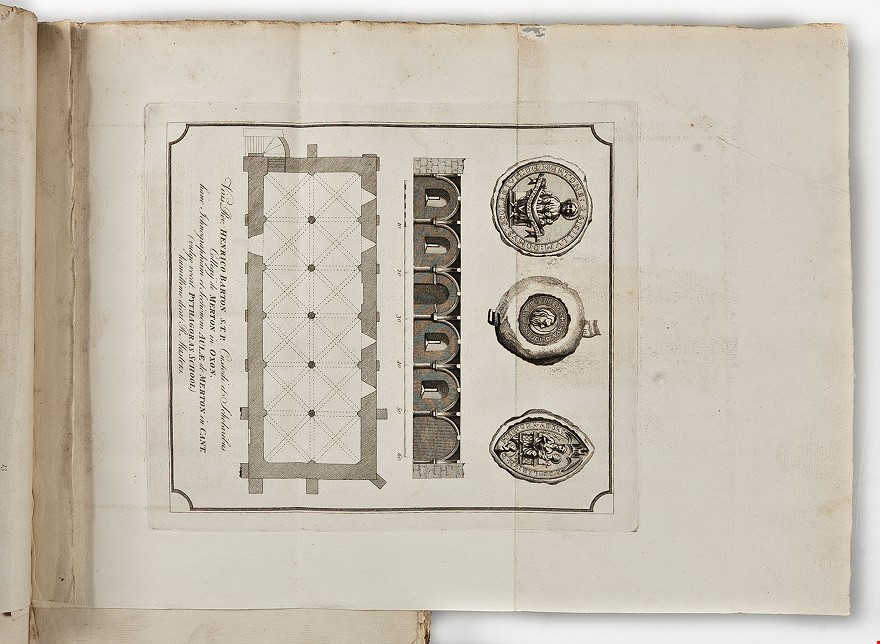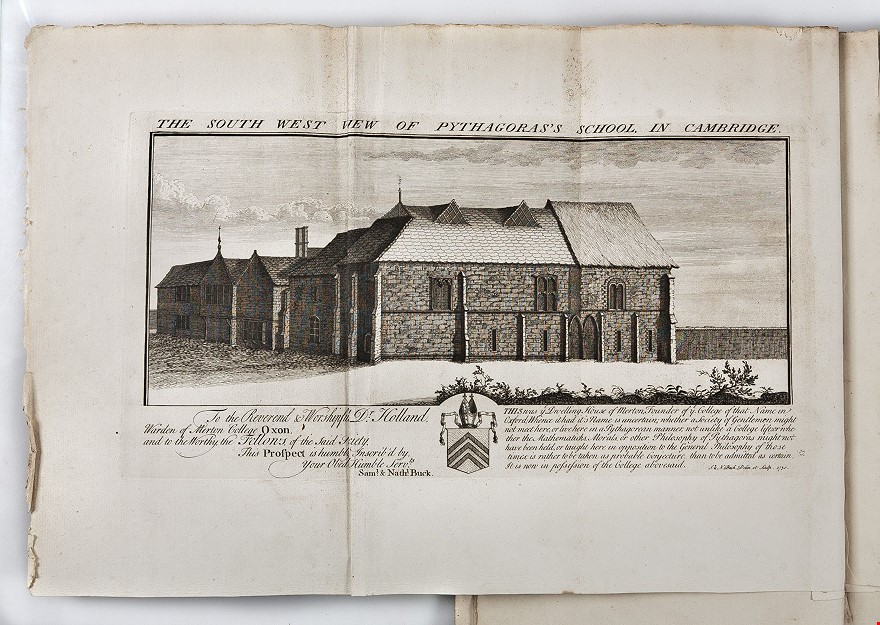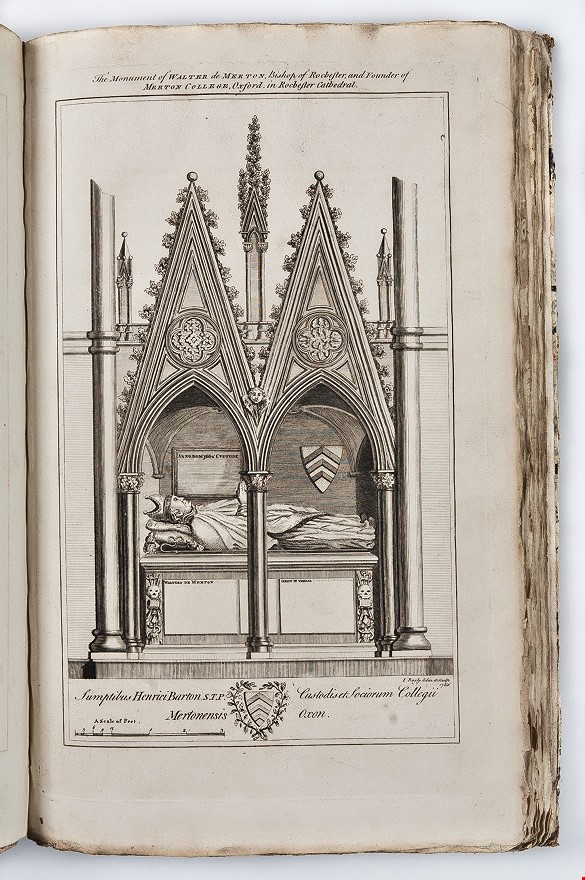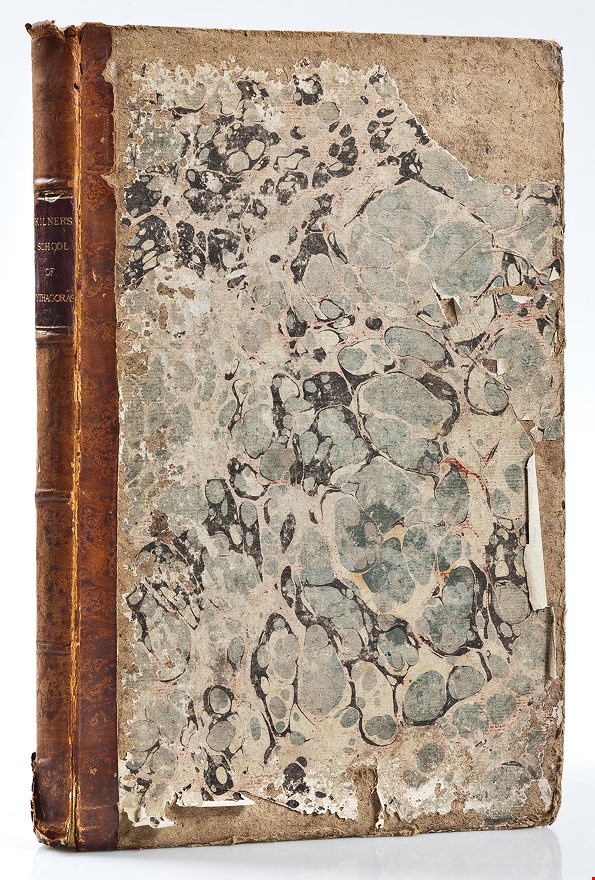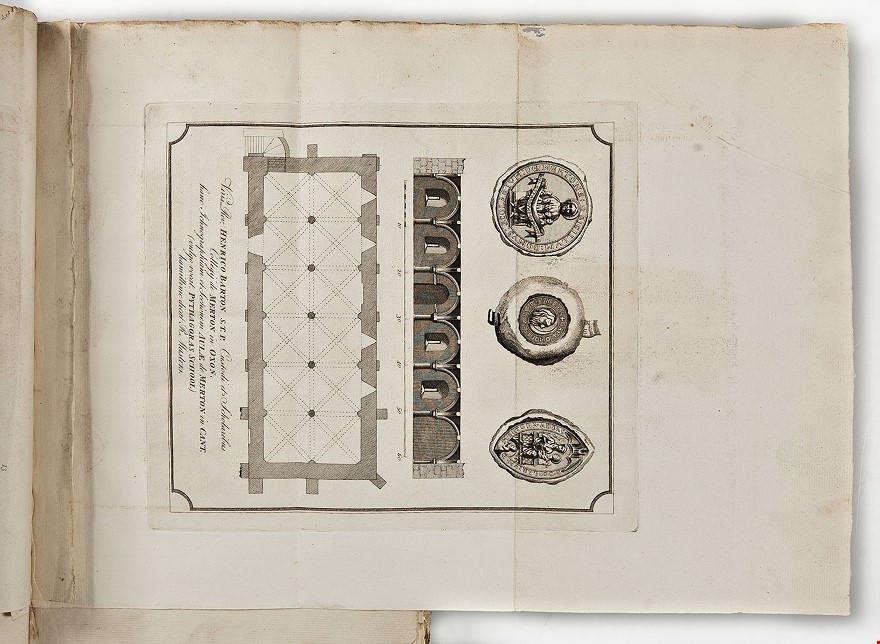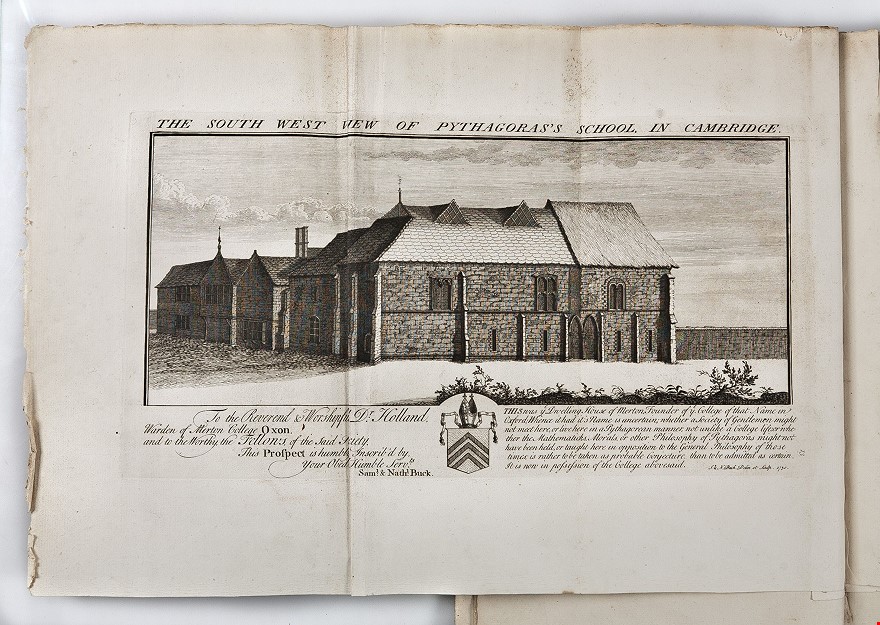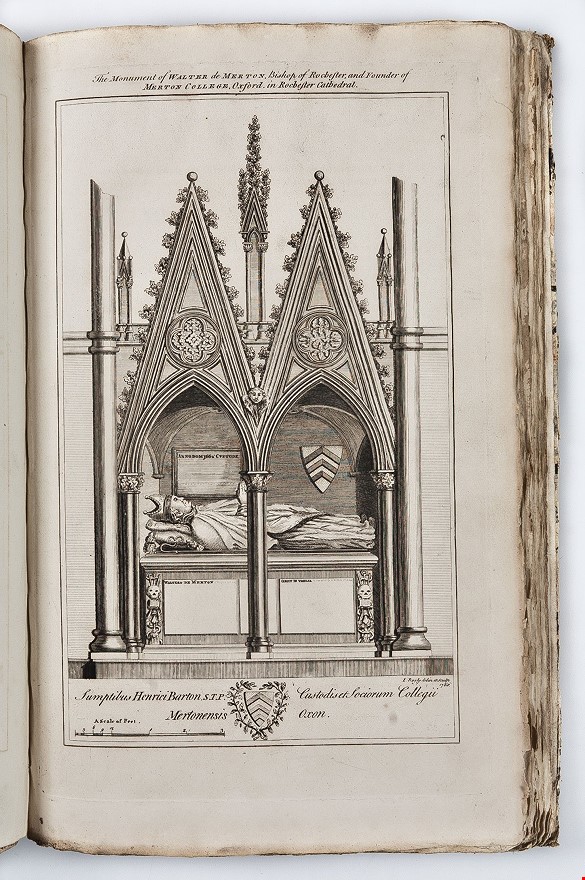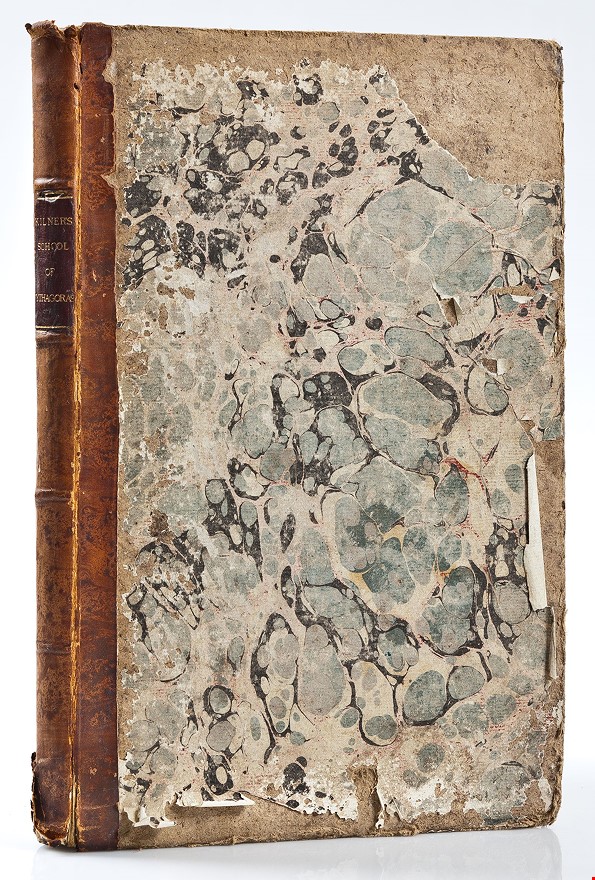The Account of Pythagoras's school in Cambridge as in Mr. Grose's antiquities of England and Wales, and other notices.
KILNER Rev. Joseph ([c.1792/3])
£750.00
Please contact us in advance if you would like to view this book at our Curzon Street shop.
Folio. v, [1 (blank)], 5-56, [4], 59-158pp., 9 engraved plates (see below), contemporary calf-backed marbled boards, edges uncut (binding somewhat worn, in particular the marbled paper coming away from boards).
[Cirencester: S.Rudder for the author?]
An uncommon book with an interesting Oxford provenance.
The Reverend Joseph Kilner (ca.1721-1793) was a member of Merton College, Oxford, a keen coin collector -he left his collection to the college -, who lived at Cirencester (he is recorded in the 1791 Directory), and built up substantial collections devoted to the town, where he was friendly with the antiquary, the Rev.John Collinson (1757-1793).The son of a country clergyman, the Rev. James Kilner (educated at Westminster School and Oxford), Joseph Kilner began his Oxford career at University College, but took his MA. from Merton. He had a younger brother Samuel (born 1732), who became fellow and eventually sub-warden (1814) of Merton.
In this work he ostensibly discusses 'Pythagoras's School', an extremely ancient building in Cambridge, which belonged, and had belonged since the 1270s, to Merton College, but in fact the book is mostly about the early history of that college, and draws extensively on the college muniments. He clearly communicated information from this source to others: Lysons in his Environs of London vol. I (1796) p. 332 note 5 refers to Mr.Kilner of Cirencester as having provided him with information about Malden, Surrey from the Merton muniments
It seems to have been written originally around 1760 by Kilner as a text to accompany an engraving of the building (plate 2 in the list below), but remained unused (and indeed rejected) until it appeared without any acknowledgment, in Francis Grose'sAntiquities of England and Wales in the 1780s. Kilner was not at all happy with this (he tells us this in the preface) and began a corrected version, of which only a part (preface, pp. 5-52, and four further pages numbered 53-56) was actually set, printed and distributed in a very small number of copies to friends ('In this reprinting it with notes and notices as here added, and for private conviction only...'p. 5). The latest date mentioned in this part of the work is 1777 (p. 15)
There was then printed (using smaller type (but the same font) and different terminal typographical ornaments), a separate section (or rather series of essays) with its own fly-title 'Something supplementary', and table of contents, which occupies pp. 59 to the end. On p. 149 we read: 'It may be here noticed that to obviate the misinformation and error respecting this hall, which has been admitted into.... the Britannia 1789, this paper [i.e. pp. 147-149] was some years since inserted in the Gentleman's Magazine without any name; and drew after it a letter of other sort...' The piece in the Gentleman's Magazine can be precisely dated to 1790 and indeed Kilner later addressed a signed letter (dated 18 December and written from Cirencester), taking up some of his earlier points (GM 1790 (2) pp.795-796 and p.1195).
There is no indication of the place of printing, but the author did live at Cirencester, and comparison with Rudder's work does not make the suggestion that this was printed in Cirencester at all untenable. Rudder, himself the reviser of Atkyns's Gloucestershire wrote a frequently printed short work on the stained glass of Fairford Church,and was active in Cirencester for many years until 1801. The plates are as follows: (1) a folding plate dated 1730 by S. & N. Buck, (2) a (copy plate (see preface) containing a ground plan, a section and some seals dedicated to Warden Henry Barton by Richard Masters, (3) Sparrow's plate, dated 13 August 1783, of P.'s School, the plate used in Grose, (4) the funerary monument of Walter of Merton, drawn and engraved by J. Bayly, dated 1768, and paid for by the Warden and fellows (at p. 56 to face inscription), and, at the end, five plates of seals (with descriptive text on pp.157-158)
Provenance: 1: Rev. William Dunn Macray (1826-1916), rector of Ducklington 1870-1912, Assistant at the Bodleian Library 1840-1905, with his ink signature dated October 1865 and pencil note 'Bought thro Hackman of a poor woman in St.Paul's Parish 3/6d' [Alfred Hackman (1811-1874), clergyman and librarian at the Bodleian, from 1844 to 1871 Vicar of St. Paul's, Oxford]; Macray is famous as the author of Annals of the Bodleian Library, 1868, for which he prepared many catalogues, and as the editor of the edition of Clarendon'sHistory of the Rebellion which is still available. 2: Bought February 1932 at Blackwell's, Oxford, by Henry Lambert, with his armorial bookplate. Lambert has added at the end some cuttings from The Times for Wednesday November 29 1933 relating to the building.
ESTC records a reasonable number of copies in the the UK and the USA. Whilst the writer's style might justly be described as opaque, it is an interesting volume in the history of English architectural and local history, replete with antiquarian learning, and is referred to in modern publications (e.g. VCH Surrey on Malden).
Stock Code: 58714
